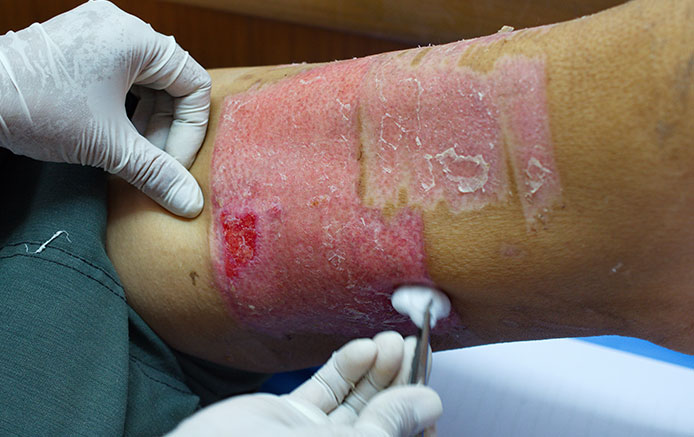
SERVICES
Removal of Skin Cancer and Reconstructive Grafting
Skin cancer is abnormal skin cell growth that usually occurs due to skin's exposure to the sun. Basal cell carcinoma, squamous cell carcinoma, and melanoma are the three most common kinds of skin cancer. More on skin cancer
What are the treatment options?
Skin cancer is treated by removing the affected tissue in one of several ways:
- Simple excision
- Mohs micrographic surgery
- Shave excision
- Curettage and electrodesiccation
- Cryosurgery
- Laser surgery
- Dermabrasion
- Radiation therapy
Reconstructive grafting is sometimes necessary following the removal of skin cancer tissue. This involves removing skin, tissue or blood vessels from one part of the body and transplanting it to another part of the body to promote healing. Skin transplants are usually done in a hospital setting under general anaesthesia.
Reconstructive grafting may be performed after skin cancer removal for:
Vascular tumours
Vascular tumours generally develop in the womb or during childhood. The cells that coat arteries in a baby's developing body can multiply faster than usual and this excess growth can result in the formation of a vascular tumour. After birth, the cells might continue to multiply, and the mass can grow. The mass can be on the skin's surface, deep beneath the skin, or both. The gaps within the mass fill with blood as the heart pumps blood out to the body, which can cause a number of health complications.
Cysts and lipomas
Cysts appear as bumps beneath the skin. Cysts are sacs that form in the body and are filled with an oily or cheese-like substance. The majority are innocuous, but they can become inflamed, infected, swollen, or sensitive as they expand. It is crucial to avoid squeezing or manipulating them.
Lipomas are fatty lumps that form between the skin and the muscle. Lipomas are generally painless, although they can enlarge and irritate nerves. Blood vessels can be found in some lipomas. Angiolipomas are a type of angiolipoma that is usually uncomfortable.
Removal of Skin Cancer and Reconstructive Grafting FAQ:
What is the recovery period for skin cancer removal?
Usually, between one and three weeks is the period of recovery for skin cancer surgical removal but this largely depends on the type of cancer.
What is the recovery period for reconstructive grafting?
Skin grafts can take between five and ten days to heal.
What is part of the recovery process for skin cancer removal?
- All wound care recommendations, such as washing and using topical treatments, must be followed precisely.
- As directed by your surgeon, you will be able to resume light activities.
- Make sure your incision sites are clean and well-protected from harm.
- Limit any movement that could put your incision or sutures under stress.

